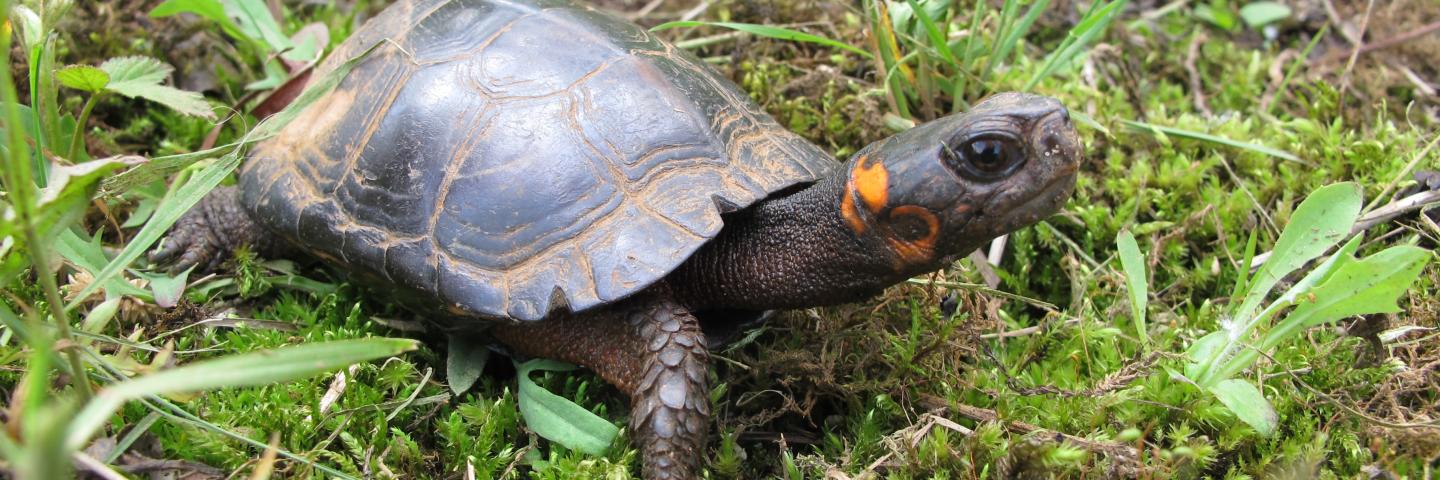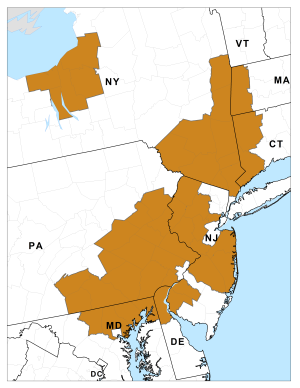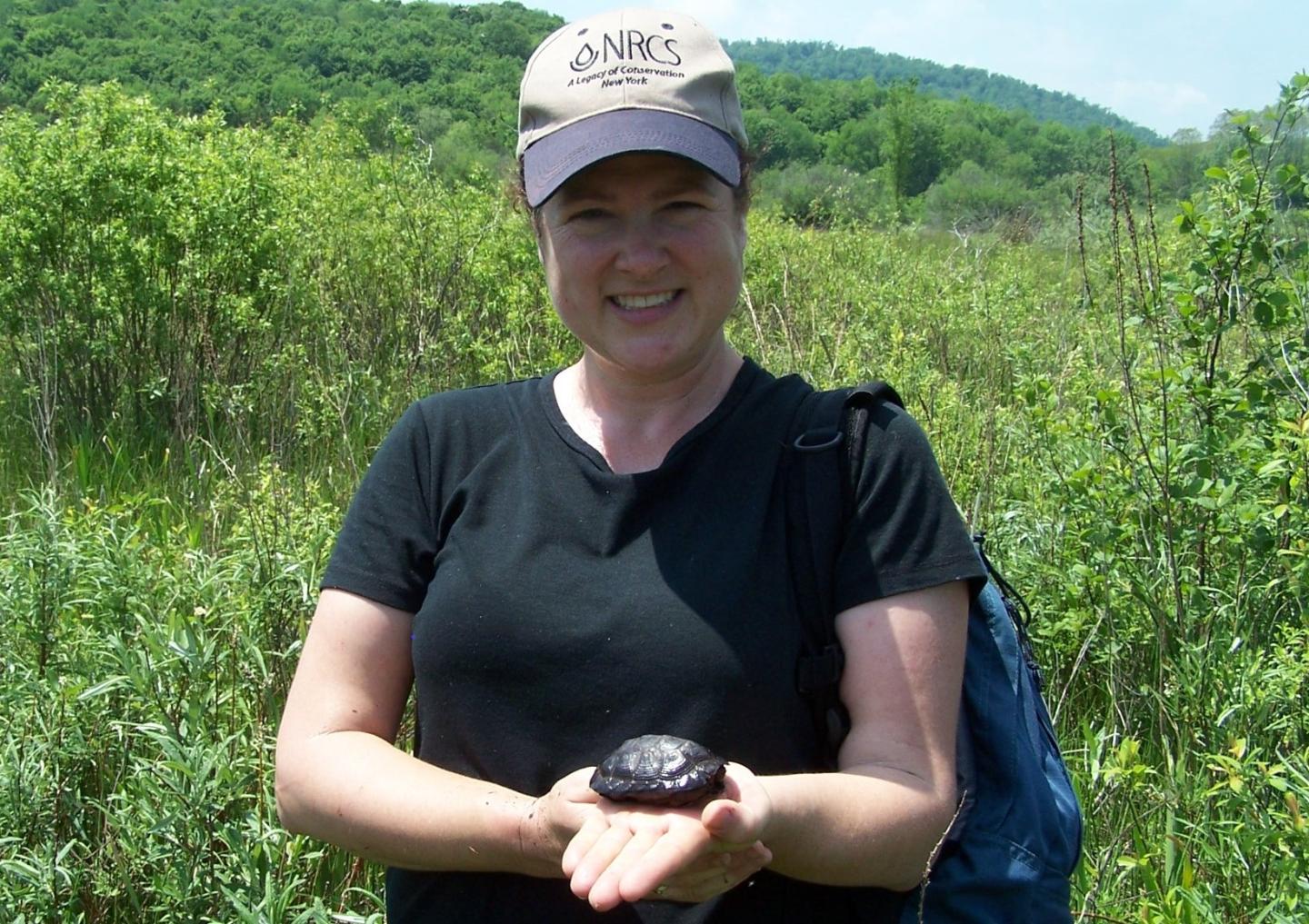
The tiny bog turtle measures only about four inches. The northern population of bog turtles ranges from New York and western Massachusetts and south to Maryland.
The tiny bog turtle measures only about four inches. The northern population of bog turtles ranges from New York and western Massachusetts and south to Maryland. The bog turtle prefers to live in open canopy, unpolluted, herbaceous sedge meadows and fens bordered by wooded areas. They depend upon a diverse habitat for foraging, nesting, basking and hibernating, and they can be a good indicator of water quality and wetland function.

The greatest threats to bog turtles include habitat degradation and fragmentation from land conversion, habitat succession because of invasive exotic and native plants, and illegal trade and collecting. Changes in land use or alterations in water flow reduce a wetland’s ability to function. Wetland habitats that have been drained and filled for development, agriculture and roads have severely fragmented the remaining habitat, isolating existing bog turtle populations. In the past 30 years, the turtle has disappeared from more than 50 percent of the wetlands it once inhabited. The U.S. Fish and Wildlife Service listed the turtle as threatened in 1997.
Most of the remaining bog turtle habitat is privately owned. Many of the wetlands are located in agricultural areas where livestock are frequently grazed. NRCS works with landowners to use prescribed grazing, which enhances habitat by slowing natural plant succession and minimizing the encroachment of invasive native and exotic plant species. As part of prescribed grazing plans, NRCS works to ensure lands are not overgrazed, creating a win for both the ag producers and this rare turtle.
NRCS offers technical and financial assistance to help landowners in target areas of Maryland, Delaware, Pennsylvania, New York, New Jersey, Connecticut and Massachusetts to voluntarily restore and protect bog turtle habitat on private lands. This assistance helps producers plan and implement a variety of conservation activities, or practices, that benefit the turtle and agricultural operations.
Technical assistance is free to producers. The agency’s staff of experts and conservation partners work side-by-side with producers to develop a conservation plan. Each plan focuses on the restoration of bog turtle habitat and is tailored to the landowner’s property. These plans provide a roadmap for how to use a system of conservation practices to meet natural resource and production goals.
Financial assistance helps producers pay for the adoption of a system of conservation practices that improve the health of pastures and wetland ecosystems. NRCS assistance covers part of the cost. Common conservation practices include livestock fencing and alternative watering systems, controlling invasive plants, wetlands hydrology restoration and voluntary conservation easements for the most sensitive sites.
The bog turtle is a nationally identified target species of the Working Lands for Wildlife (WLFW) partnership, a collaborative approach to conserve habitat on working lands. Since 2012, WLFW has enabled producers to conserve or create about 200 acres of bog turtle habitat. WLFW provides technical and financial assistance through the Environmental Quality Incentives Program and other programs funded through the Farm Bill, the largest funding source for wildlife habitat conservation on private lands.
Habitat restored for the bog turtle benefits many other species, including woodcock, migratory songbirds, rabbits, other turtles, frogs and salamanders and a host of rare plants.

Landscape Partnership Article Features NRCS Biologist
Elizabeth Marks, NRCS Area Biologist, discusses the Bog Turtle Working Lands for Wildlife partnership in New York


